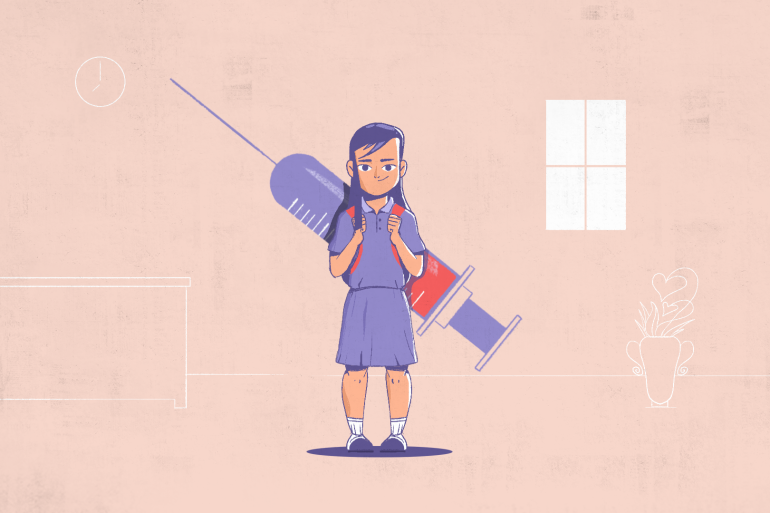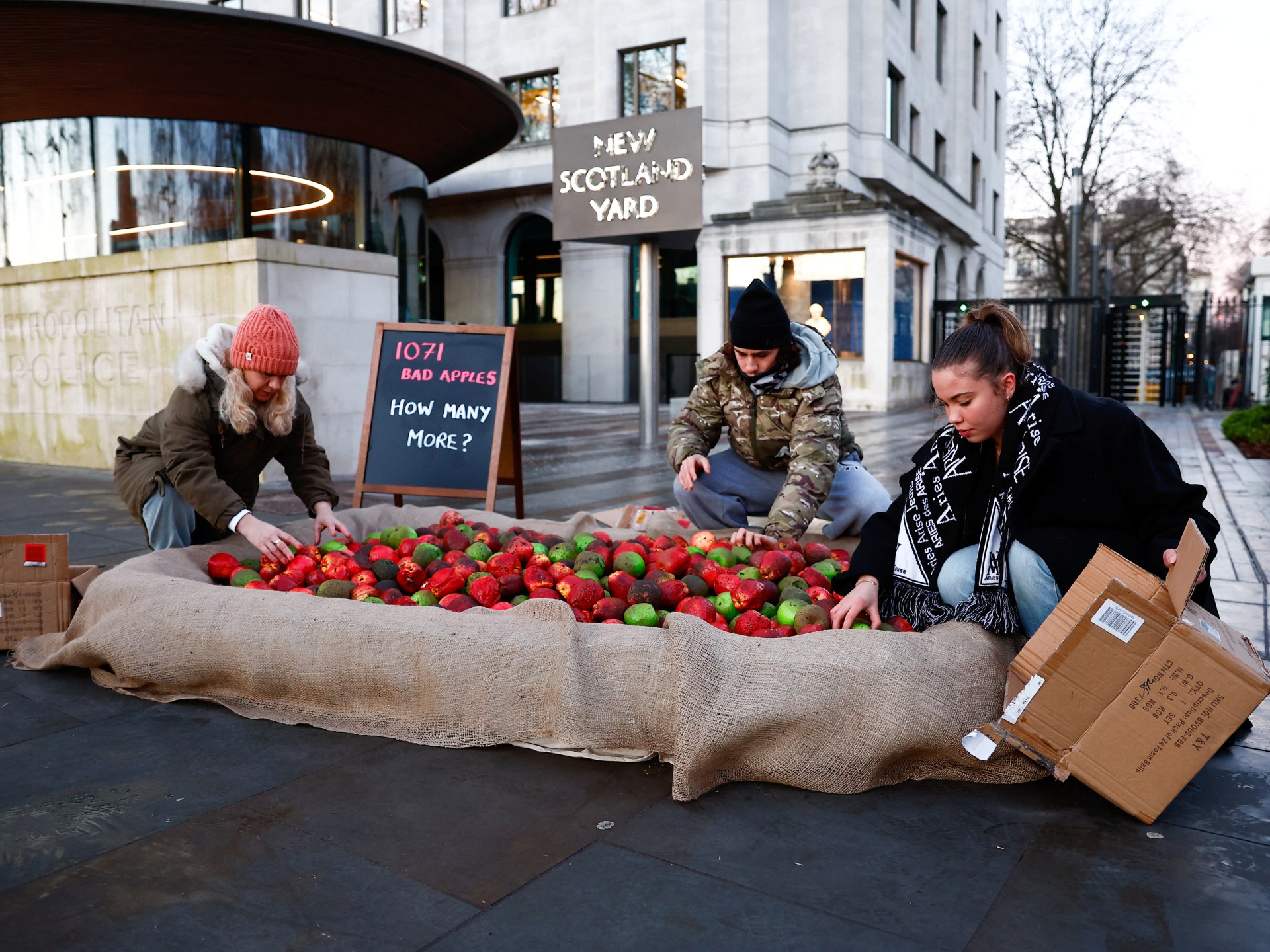Has COVID-19 fatigue caused a third wave in Europe? | Coronavirus pandemic News
In early March, the WHO warned that the number of COVID-19 cases being reported across the continent of Europe was on the rise. Hans Kluge, Europe director at the WHO, urged leaders to “get back to basics” and re-engage their populations in the drive to contain the pandemic.
“Pandemic fatigue,” he said, might be causing people to start to ignore social distancing measures, particularly combined with ongoing vaccination efforts which may also be encouraging people to relax a bit too much.
It is in Central Europe, the Balkans and the Baltic states where case incidence, hospitalisations and deaths are now among the highest in the world. Furthermore, the WHO says, the number of people dying from COVID-19 in Europe – 20,000 a week – is now higher than it was this time last year.
In response to this, many European countries have re-introduced or extended lockdown measures. Germany has extended its current restrictions until April 18 and initially planned a five-day nationwide lockdown for the first five days of April but, after much backlash, Chancellor Angela Merkel reversed this decision.
Paris is entering a new month-long lockdown, together with several other regions in the north and the south of France. A total of approximately 21 million people in 16 areas of France will be affected. France already has a nationwide curfew from 7pm to 6am.
Shops, schools and restaurants are closed in many major Italian cities, including Rome and Milan. Italy has also planned a nationwide shutdown over the three-day Easter weekend, starting on Good Friday, April 2.
Although Greece has stated it is planning to welcome foreign tourists during the European summer, it, too, has introduced new restrictions in areas where cases are highest, including Athens where non-essential shops and hairdressers are closed.
Spain’s current restrictions are in place until May and only essential trips out of the home are allowed.
All of these measures will come as a blow to Europe’s pandemic-weary populations, who have seen themselves in and out of restrictions for a year now.
Many of these are the same countries that were successful at controlling the disease in the first six months of 2020, so where did it go wrong and what can be done to prevent it from getting worse?
The new variants have played a part. Some 48 out of 53 European countries or territories have reported the B.1.1.7 variant (PDF), first identified in the UK. It is known to be up to 50 percent more transmissible than the original variant of the coronavirus due to a mutation affecting its spike protein.
This mutation allows the spike protein to latch onto human cells more readily and with stronger bonds than the original, making it more likely to infect human cells and eventually become the dominant strain, more adept at thwarting measures that were previously effective.
Several countries where this variant has become dominant have seen rapid increases in the numbers of cases, resulting in increased hospitalisations, overstretched health systems and excess mortality.
Particularly badly hit is the Lombardy region of northern Italy, which includes Milan and saw very high numbers of cases in the first wave of the pandemic this time last year. Intensive care units there are, once again, filling up with patients, two-thirds of whom are thought to have been infected by the UK variant.
Also of concern is the B1.351 – or South African – variant, which contains the E484k mutation, which can make it less susceptible to antibodies produced by a vaccine or by having previously caught COVID-19. This variant has been identified in smaller numbers in several European countries, including Spain, Germany, France and Italy, and is being carefully monitored by local governments.
Alongside all this is the worryingly slow rollout of vaccines across European Union member states. The EU ordered 300 million doses of the Pfizer-BioNTech vaccine but delivery has been delayed because the plant where the vaccine is made has undergone refurbishment in order to increase production in the longer term.
The supply of the Oxford-AstraZeneca vaccine to the EU has been a contentious issue. Oxford-AstraZeneca said it had supply chain issues at its plants in Belgium and the Netherlands, while the EU feels the UK has been prioritised for vaccine deliveries, even though it signed its contract with AstraZeneca later than the UK did.
In January 2021, despite the European Medicines Agency deeming it safe and effective for all age groups, several European countries including France, Belgium, Germany and Sweden decided the Oxford-AstraZeneca vaccine should not be used for people over the age of 65. This caused widespread damage to public confidence in the vaccine and slowed the rollout further. A month later, Germany, Belgium and Sweden reversed their decision, stating the vaccine was indeed effective in all age groups and France approved it for those aged 65 to 74. But at a time when vaccine scepticism is high, there is no doubt in my mind that this would have put some people off having the Oxford-AstraZeneca vaccine.
On top of this, there was the much-publicised halting of the Oxford-AstraZeneca vaccine in many European countries in March, about concerns it might be linked to the occurrence of blood clots. These claims were later dismissed by the European Medicines Agency, which, after reviewing the data, found no link between blood clots and the Oxford-AstraZeneca vaccine.
These small, but important, delays to the rollout of that vaccine have given the virus the opportunity to spread. The new lockdown measures being introduced by governments are designed to suppress this spread and reduce the risk of new variants emerging. Identifying and isolating breakouts of variants of concern will be key while the vaccine rollout is ramped up.
Foreign travel, so important to many European economies during the lucrative summer months, may well have to be restricted for another year. More difficult to manage will be the issue of “pandemic fatigue” in many of these countries where citizens’ liberties have already been restricted for some time.
Expectations around the easing of lockdown measures will need to be carefully managed, a task that is easier said than done. Decisive and firm government measures may still yet stop this potential third wave from reaching the peaks of previous waves, but the time to act is now.
Progress Report: New York – a variant of its very own
Towards the end of last year, a new COVID variant was identified in the blood samples of infected people in the US city of New York. Since then, we now know, it has spread at an alarming rate through the city.
The new variant, known as the B.1.526 variant is now thought to account for almost half of new cases in the city. A study has shown this variant has a number of mutations that distinguishes it from others, but two are of particular note: First is the E484K mutation, also found in the South African and Brazil variants. This mutation changes parts of the spike protein of the virus to a degree where the immune response triggered by vaccines is not as effective. The second is the S477N mutation, which affects the part of the spike protein that binds to human cells, making it more effective. We do not know yet if this will make the virus more transmissible, but studies are continuing.
It is difficult to know how worried we should about new variants that keep cropping up. The studies into the New York variant are yet to be peer-reviewed and formally published, so it is worth taking a step back from the headlines and sticking to what we know works: Social distancing, hand washing and mask-wearing. For now, stick to the local guidelines and go for your vaccine when called.
 [Muaz Kory/Al Jazeera]
[Muaz Kory/Al Jazeera]In the Vaccine Clinic: Explaining to my patients why they must still wear masks
Attending the COVID vaccine clinic is one of the best parts of my job.
It sounds strange but, as a doctor, it is rare for me to finish a general clinic where everyone has been in a good mood. Covering a clinic will usually involve delivering bad news to a patient or finding something when examining someone that warrants further investigation. But at the COVID vaccine clinic, the clinical staff, the volunteers and the patients are all smiling, although it can be tricky to see behind our masks.
The vaccines have been billed as injections of hope; the way out of the pandemic. Because the vaccines are being given first to those at the highest risk of serious illness from COVID-19, it is mostly the elderly or those with underlying health conditions that we have been seeing.
These are the same people who have been told that they must stay indoors for the very reason that they are most at risk. These are the same people who had the most to lose if they catch COVID-19. In a year where many have not been able to see or hug their family members, it is only natural for them to want to know whether having the vaccine means they can ease up on social distancing measures.
Sadly the answer, for now, is no. The vaccines will help protect those vaccinated from serious disease or death if they do catch COVID-19, but we do not yet have definitive evidence that they reduce transmission.
Although preliminary research from Israel does suggest that transmission rates have come down following vaccination, this has yet to be concluded. Vaccination rates vary depending on which country you live in, but no country has yet vaccinated enough people to assume herd immunity – the threshold at which enough people are deemed sufficiently protected to ease lockdown measures. By wearing masks and socially distancing, you are protecting those who have yet to be vaccinated from contracting the disease.
Many people have asked me what the point of the vaccine programme is if not to remove lockdown and social distancing measures. That is indeed the long-term goal and global vaccination will play a huge part in that. But, today, the point of the vaccines is to stop people from getting sick from COVID-19 and potentially dying from this terrible disease.
For many people, repeated lockdown measures have had a devastating effect on livelihoods and mental health, and I understand that. But this pandemic is not yet over and, until it is, we must continue to adhere to local social distancing guidelines, even after having a vaccine.
And Now, Some Good News: Common allergy medication saves lives of 1 million COVID patients
The UK’s National Health Service (NHS) has published data showing that the steroid medication, dexamethasone, has most likely saved the lives of about 1 million patients who had COVID-19.
Dexamethasone is a steroid-based medication normally used in the treatment of allergies, skin problems and croup – a viral illness common in children. The drug is given to people with COVID-19 in hospital who require oxygen or ventilation and can reduce some serious effects in the body caused by COVID, particularly in the lungs where it can cause damage.
Initially trialled in the UK nine months ago as part of the RECOVERY trial, dexamethasone was given to patients in 175 hospitals around the UK and researchers found it cut deaths by one-fifth. It has since been rolled out globally, saving 22,000 lives in the UK and an estimated 1 million worldwide. It is a great example of how research about treatment for this virus is being shared globally so everyone benefits.
 [Muaz Kory/Al Jazeera]
[Muaz Kory/Al Jazeera]Reader’s Question: When will children be vaccinated?
Before I answer this question, it is important to say that if a child or young healthy person does contract the coronavirus, they are very likely to have only very mild or no symptoms at all.
The vaccines have not yet been licensed for children under the age of 16, as they have not been fully tested on children. However, a study is currently under way in the UK to test the safety and effectiveness of vaccines on volunteers aged six to 17.
The study, run by Oxford University and its partners, will give the COVID-19 vaccine to 240 young people and compare outcomes with a control group of people being given the meningitis vaccine.
The study acknowledges the fact that the vast majority of young people do not develop serious symptoms from COVID-19, but there are a small number of clinically vulnerable children who have underlying health conditions who may benefit from the vaccine.
As well as this, if the vaccines prove to reduce transmission, then vaccinating children may well be a key part of ending the spread of the virus.





